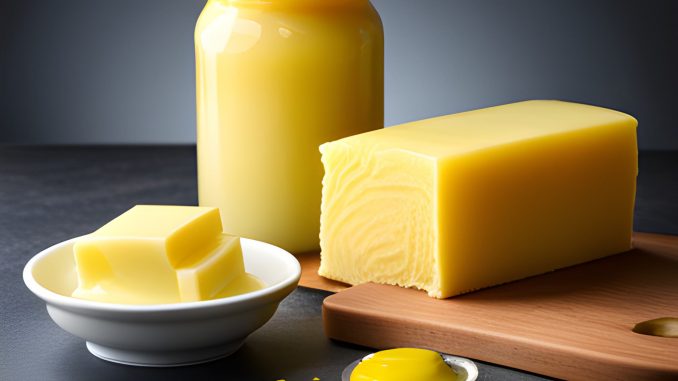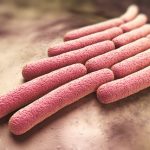
Organogels have suddenly become big news for a wide range of reasons. Its mainly because we have discovered a range of compounds with a variety of properties which are able to gel organic solvents but are present in the system in extremely low concentrations.
One way to think of an organogel is to adopt the simple working definition of a gel. It is a soft, solid or solid-like product that has both liquid and solid components. The solid part is the gelator and acts as a mesh or network of aggregates to immobilise the liquid component. The mesh acts by changing the surface tension of the liquid. The consequence is this solid network or mesh literally traps liquid in it so that it can no longer flows freely.
When the gel is a hydrogel then the liquid is water otherwise it is called an organogel if the liquid is an organic solvent. When we have a hydrogel, the gelating agent is a polymer. Gelators used to enmesh organic solvents are small molecules. Another terms used for the liquid phase is a sol which we will also use as a term in this article.
Not many organogels are being investigated but of those that have excited technologists, a few are suitable for drug delivery. Unfortunately, most of the existing organogels are made up of pharmaceutically unacceptable organic liquids and gelators. Many of these have yet to be tested in any system.
A number of excellent books now discuss organogels and their applications. Please read tomes by Guenet (2016).
The gelators used in organogels are:-
- Non ionic surfactants such as sorbitan monostearate
- n-alkanes like hexadecane and other larger chain organic liquids
- Various steroids and derivatives
- Macrocyclic gelators such as calixarenes
- Anthranyl derivatives
- Stearic acid
- Waxes.
- Ceramides
- Monoglycerides
Preparing An Organogel
- The most common method of preparation is heat a mixture of the liquid component with the gelator. This forms a dispersion which is an organic solution.
- The solution is allowed to cool. In the process of cooling, the solubility of the gelator in the liquid phase decreases. The gelator-solvent interactions start to reduce with the gelator molecules becoming insoluble and falling out of solution.
- What is left is a mesh, an entanglement of various connected molecules and aggregates which all produce a three-dimension network. This immobilises the liquid phase.
- These physical organogels are held together by noncovalent forces.
- The gel is thermoreversible which means heat can undo this mesh and make it liquid again – that hints at some useful properties for all sorts or reasons.
Thermoreversible Gelling
When the gel is heated it melts returning us to a liquid or sol phase whilst the enmeshing gelator redissolves in the organic liquid. If you cool the hot sol (solution) again, the whole lot tends to return to a gelated state.
The temperature known as Tg is the gelation temperature and marks the point between the sol-to-gel or gel-to-sol transition. When a 10% w/w sorbitan monostearate is prepared the gelation temperature Tg occurs between 41 and 44 °C.
Analysis Of Organogels
Organogels are analysed and assessed using a variety of methods. These include the following:-
- Viscosity and rheological properties
- Gelation behaviour
- The phase transition or gelation temperature
- Water content
- Percentage drug content
- Stability over shelf-life
- The structure of the organogel
- Permeation behaviour especially with skin
What Is The Structure Of An Organogel?
Take the example of an organogel where solutions of lecithin are added to an organic solvent such as iso-octane. The addition of trace amounts of a polar material or solvent like water, ethylene glycol, glycerol and formamide produces gelation.
When lecithin dissolves in a nonpolar media on its own, it self-assembles into spherical reverse micelles. When small critical amounts of a polar solvent is added, the reverse micelles grow and a further transformation occurs where tubular and cylindrical micellar aggregates form. This is known as the sphere to cylinder transformation.
Types of Organogels
There are two basic types of organogel based on the type of the gelator:
- LMW gelator (low molecular weight)
- Polymeric gelators
The LMW gelator based organogels are generally held together by physical forces and form into two types:- a solid-fibre matrix or a fluid-fibre matrix.
The ones based on polymeric gelators can involve two types of intermolecular interaction which are either chemical or physical types. The chemical types rely on a cross-linked matrix whilst the physical type is based on an entangled chain matrix.
The Sorbitan Monostearate Organogel
The Microemulsion-based gel
Lecithin Organogel
Eudragit Organogels
In-situ Formation Of An Organogel Based on L-Alanine Derivatives
Organogels based on L-alanine derivatives are prepared from N-lauroyl-L-alanine methyl ester (LAM). These form gels for use in pharmaceuticals. The solvents are soybean oil and medium-chain triglycerides.
This gel exists at room temperature but when ethanol is added to a gelator-solvent solution it prevents gelation. Addition of ethanol disrupts the formation of hydrogen bonds which is needed for self-assembly into aggregates between these gelator molecules.
The Pluronic Lecithin Organogel (PLO)
The PLO is a soy lecithin-based organogel consisting of isopropyl palmitate or isopropyl myristate, water and Pluronic F127 (also known as Poloxamer 407). It can also contain sorbic acid which is a well established food preservative and sits in both phases. It has a yellow colour, is odourless and and forms an opaque gel. It is readily absorbed into the skin.
Using Organogels In Food Applications
The replacement of trans fats in foods is a major food research topic at this moment because many food product developers would like to remove them all together and reduce our saturated fat intake. The idea now is to structure liquid oil to replace trans fats without raising the saturated fat content in foods (Co & Marangoni, 2012). Whilst organogels have great potential in this regard, replacing a hard fat with a liquid oil produces major alterations to food texture and quality. The use of novel gelators has to some extent helped improve if not impart some solid-liquid functionality to these liquid oils.
The food based gelators include phytosterols and 12-hydroxystearic acid. These thermodynamically self-assemble into crystalline fibers to trap oil. We can also call upon additives such as waxes, ceramides, monoacylglycerides, and other surfactants. One prime example is the formation of a polymer gel using ethyl cellulose to entrap triacylglyceride (TAG) oils. Some other alternatives include the formation of protein‐stabilized cellular solids with oil trapped within the cells.
A research team at the USDA in Peoria, Illinois USA has created a margarine free from trans-fats (Hwang et al., 2012). In this study, plant waxes such as sunflower wax and rice bran wax have the best gelation ability and can form an organogel using amounts as low as 0.3 to 0.5 %w/w. A soybean oil based organogel formed with 1-6 %w/w sunflower wax showed a similar or greater firmness than one with 18-30% partially hydrogenated soybean oil.
References
(2012) Organogels: an alternative edible oil‐structuring method. J. Am. Oil Chem. Soc. 89 pp. 749–80 (Article).
Guenet, J.-M. (2016) Organogels: Thermodynamics, Structure, Solvent Role, and Properties. Springer Briefs in Materials ISBN 978-3-319-33178-2.
Hwang, H.-S., Kim, S., Singh, M., Winkler-Moser, J.K., Liu, S.X., (2012) Trans Fat-Free Margarine from Organogel Formed by a Plant Wax. 289-03 Abstract 2012 IFT Annual Meeting, June 25 – 28, Las Vegas NV. USA.


Leave a Reply